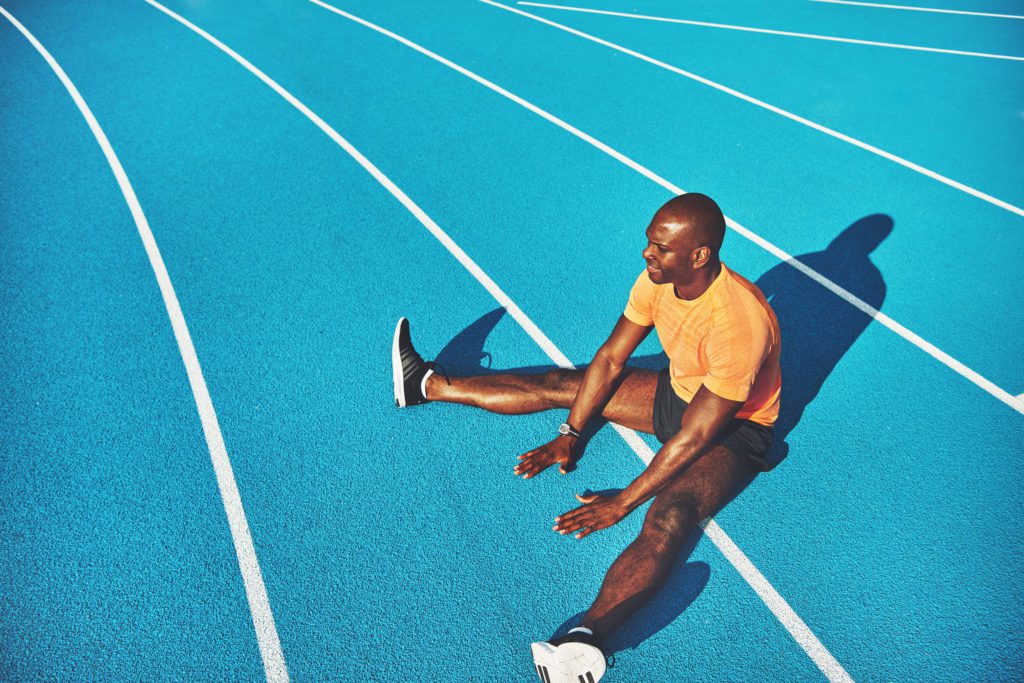Becoming a master of the warm-up
The length of time, chosen movements and intensity of a warm-up is dictated by the workout that follows.

— by Melanie McQuaid
In general, a warm-up should include a progression which means the work develops as the warm-up continues. The body is allowed to move through a range of intensities in a gradual way, letting the body to warm up, muscles to loosen, breathing rate to increase and the nervous system to engage. Warm-ups help you focus and allow you to become fully absorbed in the training session.
Related: The case for proper warm-ups
This progression varies according to the workout. For a long run, a simple progression from a comfortable pace to endurance pace over 20 or 30 minutes is effective. However, this warm-up is inadequate for running track intervals or a hard swim session. For technical and high-intensity training, priming with harder efforts, mobility, technique and coordination improves performance from the first interval and through the set.
Broad to Specific
A gradual progression from easy to moderate intensity is a broad warm- up. For technique and higher intensity work, a more specific warm-up is more effective.
For example, in a swim warm-up, you may start with 400 metres of your choice swimming, which is a broad warm-up. After that initial waking up of the body, shifting to specific work like technical skills or a short set of intense 50-metre intervals increases the specificity of the warm-up. The skills and the level of intensity in the warm-up should match the following workout. If the main set is 25-metre sprint repeats, the warm-up should include some amount of intensity at sprint effort and technical drills to reinforce sprinting mechanics.
Related: Activation drills for triathletes
An intense running warm-up should always start at a gentle pace and progress to a higher intensity. Once the body is warmed up, some coordination, mobility and muscle activation drills shift the warm-up to specific running movements. The warm-up should finish with short building efforts to goal training intensity, priming the engine for the main intervals.
Factors Influencing Warm-ups
Rest Days
Athletes need a longer warm-up after a day completely off training. It takes longer to regain coordination and mobility after resting. Recovery allows the muscles and the nervous system to relax completely, so giving the body a longer and more specific warm-up helps wake things up again after a rest.
Multiple Sessions in a Day
With multiple sessions scheduled in a day, the subsequent sessions need less of a warm-up than those first thing in the morning. Within a three-to-four-hour window, the amount of warm-up required is less because the body is still primed from the previous session. When there are multiple training sessions, individual preference and current status of the athlete dictates on how much warm-up is required. There is no downside to a longer warm-up, but sometimes a second session can be abbreviated.
Related: Six stretches for triathletes

Early Morning vs Evening Workouts
Early morning sessions require more warm-up and activation than an evening session because the body has been active for most of the day (even after a nap).
The warm-up should be designed so that the athlete is ready to perform at their best on the first interval of a session. Spending time thinking about the quality of the warm-up is important to ensure athletes get the most out of their training and for injury prevention.
Melanie McQuaid is a three-time XTERRA and two-time ITU Cross Triathlon World Champion, professional triathlete, and coach at MelRad Multisport; melrad.com.


